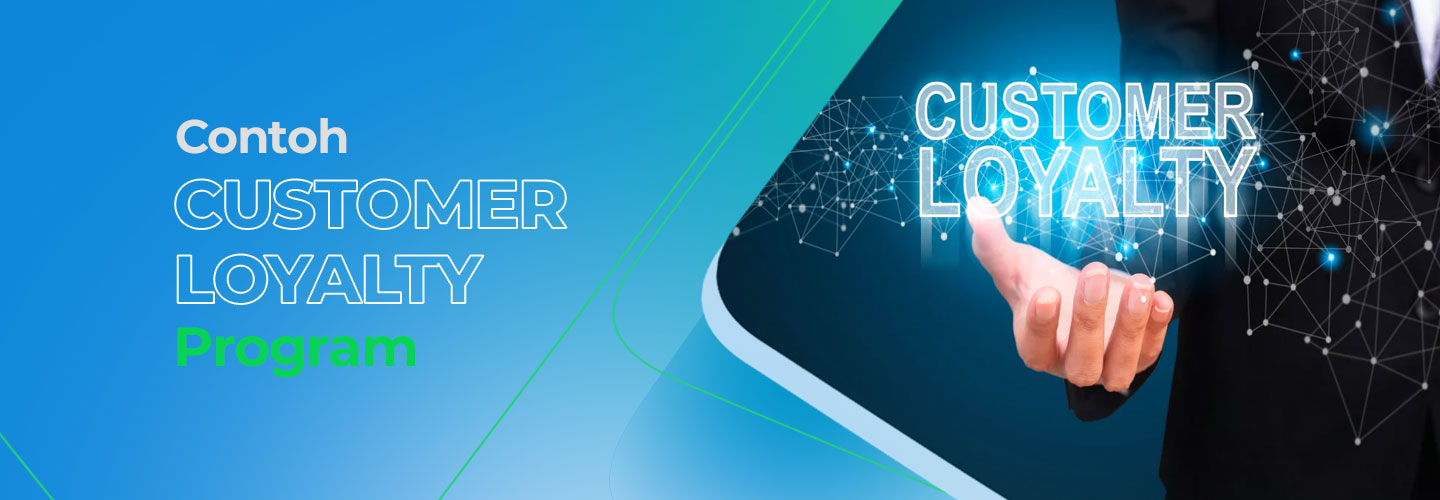Examples of Successful Customer Loyalty Programs for Brands

More than 90% of companies have some type of customer loyalty program. The program is one of the most effective tactics in increasing revenue, and retaining consumers. As many as 84% of consumers say that they are more loyal to brands that offer customer loyalty programs.
Not only for old consumers, this program can also attract new consumers. Without offering products and services, consumers need a reason to continue shopping exclusively with your brand.
What is a customer loyalty program, and how is it used?
Customer loyalty programs are brand strategies that encourage consumers to continue buying. Brands can provide benefits to active consumers. That way, the more consumers who buy or interact with the brand, the more rewards they will get.
Brands can offer points or vouchers to consumers which can later be exchanged for discounts, discounts, free products or gifts. This is done to motivate consumers to make repeat purchases, and build trust between consumers and brands.
Examples of the best customer loyalty programs
Below are seven examples of the most innovative customer loyalty programs. You can study each program. That way you might find some program ideas that your brand can use.
1. DSW
In running the customer loyalty program, Designer Shoe Warehouse (DSW) gives consumers points for every purchase, and provides levels of rewards that consumers will get when they shop more.
To increase consumer involvement in the customer loyalty program, DSW conducted an email campaign aimed at reminding consumers about their program. This campaign consists of emails containing:
- the number of points required to get the discount.
- a snapshot of the consumer's interaction with the brand which contains: information on how long the consumer has been a member, the number of points they have, and how much nominal value they have saved in the last two years.
2. Sephora Beauty Insider
One of the obstacles of the Sephora cosmetics retail store is that the products are expensive. However, by becoming a Beauty Insider member, consumers will get prizes for every purchase based on a points system. The unique part is that consumers can choose how to use the points, both gift cards and discounts.
This is done to offset the purchase price without needing to cut product prices. Members can also exchange points for more exclusive things, such as limited edition products or getting in-store beauty tutorials.
3. Starbucks Rewards
Currently, many brands are using applications for customer loyalty programs. However, the first time Starbucks launched Starbucks Rewards through the application, it was a truly genius new idea. Because consumers don't need to worry about the card being lost, or filling out several sheets of paperwork for administration.
To earn points (or stars as Strabucks calls them) consumers must order or pay with the Starbucks app. All transactions are centered on application usage. This is also very useful for knowing locations, favorite menus and consumer habits. This way you can collect consumer data even more easily.
4. Amazon Prime
For the retail industry, many products and prices are similar, so customer loyalty programs are carried out to be a differentiator and an advantage. Amazon competes fiercely with Walmart and Costco. The way Amazon differentiates itself from others is by convincing consumers to become Prime members.
For an annual fee, Prime members will enjoy two days of unlimited shipping service that can be used on millions of products, Amazon streaming, and Prime Day sales. This method works because, compared to other consumers, Prime members spend an average of four times more.
5. The North Face
Consumers who are registered members of The North Face will get points in the XPLR Pass program. Points are not only earned when shopping, but also when attending exclusive The North Face events, checking in at certain locations, and downloading The North Face application.
When points have been collected, consumers can exchange them for access to limited edition collections or collaborations, the opportunity to use products before they are released, and the opportunity to enjoy exciting trips, such as climbing a gunner in Nepal.
6. REI Co-op
It is important to remember that consumers are not always interested in customer loyalty programs, because they know the end goal is about buying more and spending more money. Therefore, customer loyalty programs must be able to shift focus and make consumers feel profitable.
For $20 REI Co-op invites consumers to become lifetime members. After joining, consumers will get a 10% discount on every purchase, access to garage sales with huge discounts, and discounts to enjoy the adventures provided by REI Co-op.
7. Apple
Sometimes the most innovative customer loyalty program is no loyalty program at all. Without offering rewards and incentives, brands can still sell products at high rates. This can be seen through the Apple brand. By providing good product quality, creating advanced features, and offering product benefits with every purchase, Apple can attract consumers, without using a customer loyalty program.
If you are not sure which program is appropriate or which consumers will like. You can ask your consumers about the customer loyalty program they want. To find out, take advantage of surveys or polls with your consumer base, then create a program that customers want.
